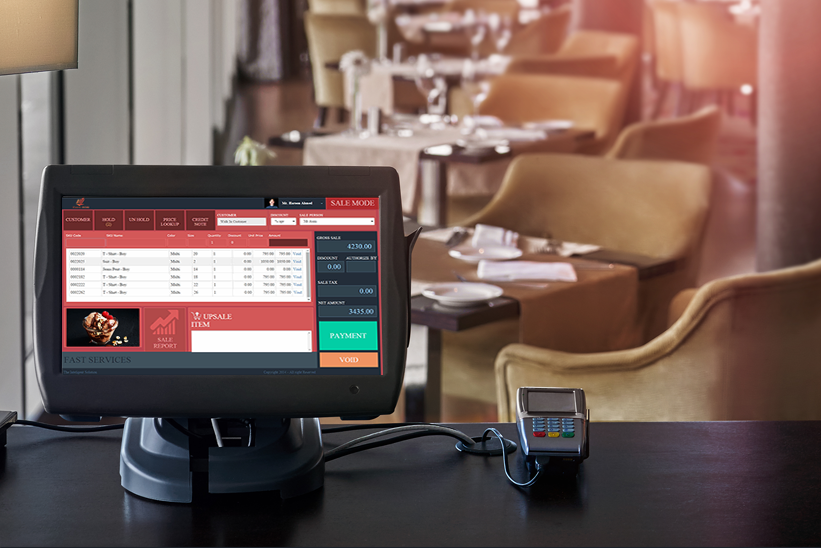The restaurant industry is fast-paced, competitive, and constantly evolving. In this environment, having the right tools to manage operations is crucial. One of the most essential tools for any restaurant is a robust Point of Sale (POS) system. But with so many options available, how do you choose the best restaurant POS system for your business? This article will guide you through the process, helping you make an informed decision that aligns with your restaurant’s needs.
Why Is a Restaurant POS System Important?
A restaurant POS system is more than just a tool for processing payments. It serves as the central hub for managing orders, tracking sales, and ensuring smooth communication between the front-of-house and back-of-house operations. The right POS system can improve efficiency, enhance customer experience, and provide valuable insights into your restaurant’s performance.
Key Considerations When Choosing a Restaurant POS System
1. Understand Your Restaurant’s Needs
The first step in choosing the right POS system is to assess your specific requirements. Consider the following factors:
- Type of Restaurant: Is it a quick-service, casual dining, or fine dining establishment?
- Size of Your Business: Do you manage a single location or multiple outlets?
- Key Features Required: Identify must-have features such as online ordering, table management, or inventory tracking.
2. Ease of Use
A POS system should simplify tasks, not complicate them. Choose a system with an intuitive interface that is easy to navigate for both new and experienced staff. User-friendly software minimizes training time and reduces errors during peak hours.
3. Customization and Scalability
Your POS system should grow with your business. Look for a platform that offers customization options to meet your unique requirements. Additionally, ensure it can scale to accommodate future expansion, such as adding new locations or integrating new features.
4. Hardware Compatibility
Consider the hardware requirements of the POS system. Some systems operate on specific devices like iPads or Android tablets, while others require proprietary hardware. Ensure that the hardware is durable, reliable, and aligns with your budget.
5. Cloud-Based vs. On-Premise Systems
Restaurant POS systems come in two main types:
- Cloud-Based Systems: These are hosted online and allow you to access data from anywhere. They are ideal for businesses with multiple locations.
- On-Premise Systems: These are installed locally on your premises. While they offer more control, they may lack remote accessibility.
Choose the type that best suits your restaurant’s operations and infrastructure.
Essential Features to Look For in a Restaurant POS System
1. Order Management
An efficient POS system should streamline the order-taking process. Features such as split bills, customizable menus, and modifiers ensure accuracy and speed in processing orders.
2. Inventory Management
Inventory tracking is crucial for managing costs and preventing shortages. A good POS system will monitor inventory levels, alert you to low stock, and even suggest reorder quantities.
3. Integration with Online Ordering Platforms
With the rise of food delivery and takeout services, your POS system should integrate seamlessly with popular online ordering platforms. This ensures that all orders are centralized and reduces the risk of errors.
4. Payment Processing
Your POS system should support multiple payment methods, including credit cards, digital wallets, and contactless payments. This flexibility improves customer satisfaction and speeds up transactions.
5. Customer Relationship Management (CRM)
CRM features allow you to track customer preferences, manage loyalty programs, and send targeted promotions. These tools help build strong customer relationships and encourage repeat business.
6. Reporting and Analytics
Data-driven insights are essential for making informed decisions. A robust POS system should provide detailed reports on sales, employee performance, and customer trends.
7. Security Features
Ensure that the POS system complies with industry security standards, such as PCI DSS, to protect sensitive customer data and prevent fraud.
Steps to Evaluate and Choose the Best POS System
1. Conduct Research
Begin by exploring the leading POS systems in the market. Read reviews, watch demos, and request case studies to understand their performance in real-world scenarios.
2. Request a Demo
Schedule a demo with shortlisted providers to evaluate the system’s functionality and user experience. This hands-on approach helps you determine if the system aligns with your operational needs.
3. Check for Customer Support
Reliable customer support is critical for resolving issues quickly. Ensure the provider offers 24/7 support through multiple channels, such as phone, email, or live chat.
4. Assess Costs
Compare the pricing structures of different systems. Consider the total cost of ownership, including hardware, software, setup fees, and subscription costs. Look for a solution that offers value without compromising quality.
5. Test Compatibility with Existing Systems
If you already use software for accounting, payroll, or reservations, ensure the POS system integrates seamlessly with these tools to avoid operational silos.
6. Seek Feedback
Talk to other restaurant owners or industry peers who have used the POS systems you are considering. Their insights can provide valuable context for your decision.
Top Restaurant POS System Providers to Consider
Here are some of the most popular POS system providers in the industry:
- Square for Restaurants: Known for its user-friendly interface and flexible pricing plans.
- Toast: Offers robust features tailored to the foodservice industry, including kitchen display systems and online ordering.
- Lightspeed Restaurant: Ideal for multi-location businesses with advanced inventory management tools.
- TouchBistro: Focuses on restaurant-specific needs and offers an offline mode for uninterrupted operations.
Mistakes to Avoid When Choosing a POS System
- Ignoring Scalability: Failing to choose a scalable solution can limit your business growth.
- Overlooking Hidden Costs: Always ask about hidden fees, such as charges for software updates or additional features.
- Rushing the Decision: Take the time to evaluate your options thoroughly. A hasty decision can lead to regret and unnecessary expenses.
- Neglecting Staff Training: Even the best system is ineffective without proper training. Ensure your team knows how to use the POS system efficiently.
Conclusion
Choosing the best restaurant POS system for your business is a critical decision that impacts daily operations and long-term success. By assessing your needs, prioritizing essential features, and conducting thorough research, you can find a solution that enhances efficiency, improves customer satisfaction, and supports your growth. Take the time to evaluate your options, and invest in a POS system that aligns with your business goals.
Remember, the right POS system isn’t just a tool—it’s a partner in your restaurant’s journey toward excellence.



